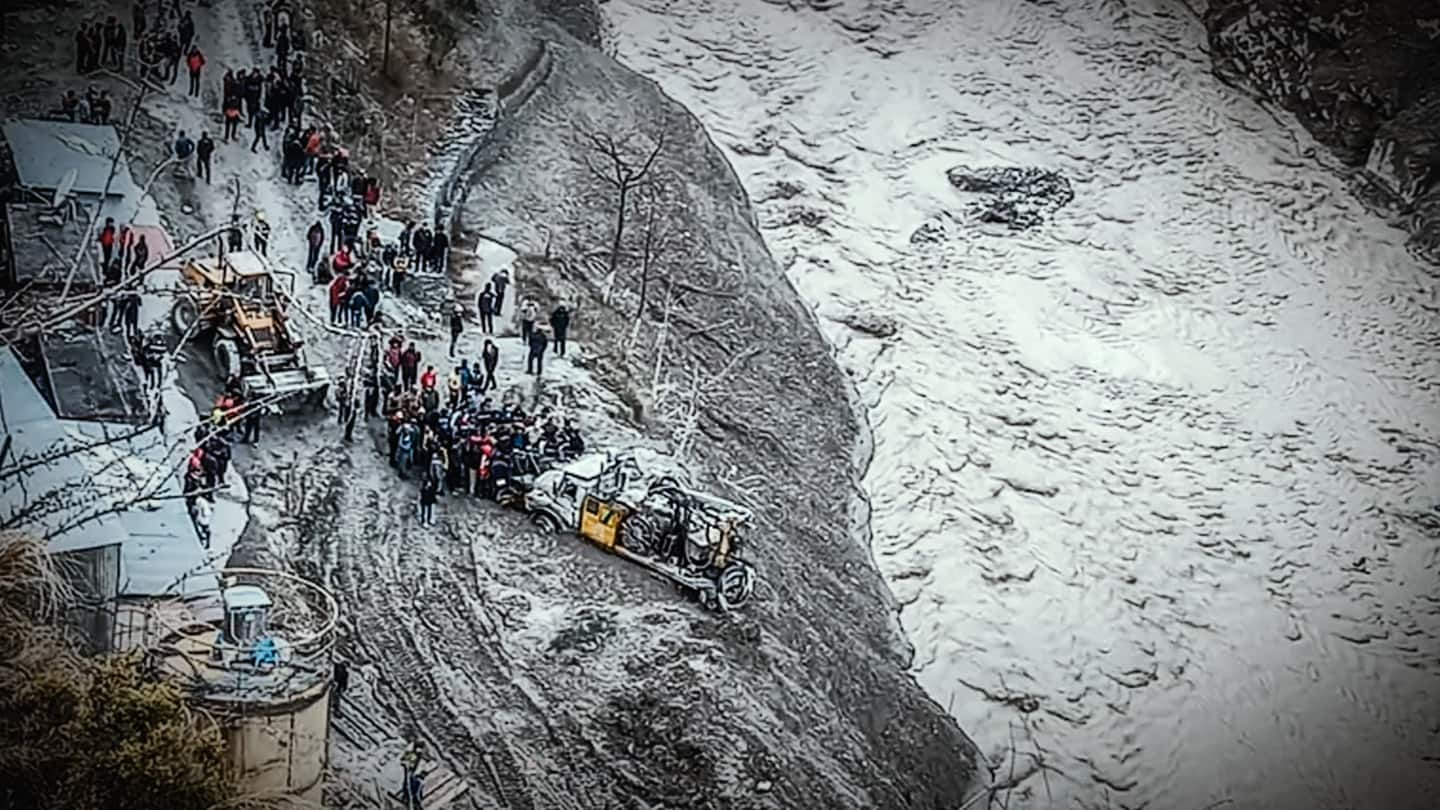
What triggered latest tragedy in Uttarakhand? Experts weigh in
What's the story
On Sunday, Chamoli district in Uttarakhand, India's northern state wrapped by the Himalayas, was jolted by the sudden rise in water level. The incident fanned fears of a repeat of the 2013 tragedy, wherein a cloudburst led to unprecedented flooding, taking the lives of nearly 6,000 people. Now, experts are scrambling to understand what caused the latest mishap, that has killed 14 so far.
What happened
After incident was reported, experts got to work
As it turns out, a head constable from Joshimath apprised the State Disaster Response Force (SDRF) about the disaster at 10:45 am. Subsequently, rescue teams, spanning agencies, were mobilized. On the other hand, experts tried to make sense of the incident. By evening, it became amply clear that large-scale flooding might not happen. But the term GLOF, short for glacial lake outburst flood, started getting traction.
Term
GLOF refers to downstream flooding due to breach in lake
In the Himalayas, the formation of lakes due to melting glaciers is not uncommon. These water bodies, dubbed as proglacial lakes, are merely restricted by sediments and boulders. If the boundaries of these lakes are breached, a flood in lower areas is imminent, with the rushing water gaining momentum as it flows. GLOF concerns itself with this downstream flooding caused by breaches in lakes.
Reason
Expert believes avalanche wouldn't have caused increase in water flow
While some blamed an avalanche, reported two days before Sunday's tragedy, for the latest GLOF event, experts aren't completely sure. Professor HC Nainwal, a glaciologist at the Hemwati Nandan Bahuguna Garhwal University, said it is unlikely that an avalanche would lead to a surge in water flow. The water has to come from a source which is unknown till now, he told IE.
Lakes
Another expert didn't find any glacial lakes in the area
Separately, Argha Banerjee, a glaciologist at the Indian Institute of Science Education and Research (IISER), Pune, said there are many glacial lakes, most of them known to scientists. "After today's event, I started looking at the satellite images, and I couldn't find any glacial lake in that area," he said, adding that high-resolution satellite images might help. However, if there are no such lakes, then yesterday's event would be surprising, he asserted.
Possibility
Tear in make-shift dam may have sparked the tragedy
Pointing toward one possibility, Banerjee explained that a make-shift dam could have been created by an avalanche or landslide, obstructing the flow of water. Once, the pressure intensified, the make-shift dam might have broken off, leading to the incident. Professor AP Dimri from Jawaharlal Nehru University claimed that a cloudburst (akin to the 2013 tragedy) is rare at this time of the year.
Statement
Exact reason would be ascertained after reaching site: Banerjee
As several questions are lingering, experts would be visiting the site to fish for answers. Two teams from Wadia Institute of Himalayan Geology, Dehradun, would pay a visit today. Nainwal and Banerjee also advocated that the exact reason would be known after reaching ground-zero. "We would know the exact reason only after reaching the site. It might take a day or two," Banerjee said.